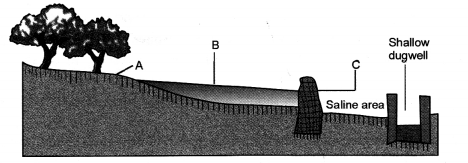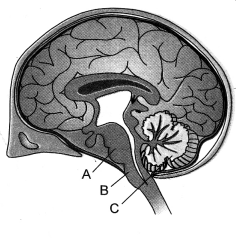Value Based Questions in Science for Class 10 Chapter 16 Management of Natural Resources
These Solutions are part of Value Based Questions in Science for Class 10. Here we have given Value Based Questions in Science for Class 10 Chapter 16 Management of Natural Resources
Question 1.
Your father has a car. He can also afford to hire a driver. Even then he sends you in school bus. What is the rationale behind it ?
Answer:
It is saving on natural resources for which your father insists on your going to school in the school bus. The bus has to make trip to school. There will be no extra gasoline consumption if you go to school in the bus. Going by car will consume gasoline. If every student who can afford goes in a car, the consumption of gasoline will go up several times. It is because of this reason that many offices maintain cabs for bringing the employees to the work place. It is just similar to our campaign to save electricity (by putting off light and gadgets not in use) or water (by turning off the tap when water is not required).
More Resources
- Value Based Questions in Science for Class 10
- HOTS Questions for Class 10 Science
- NCERT Solutions for Class 10 Science
- NCERT Exemplar Solutions for Class 10 Science
- Previous Year Question Papers for CBSE Class 10 Science
Question 2.
CFL is quite costly as compared to incandescent electric bulb. Even then we read that incandescent bulbs should be replaced by CFLs. Why so ?
Answer:
CFL or compact fluorescent lamp consumes one fifth of energy as compared to incandescent bulb. It also produces less heat and is therefore, environmental friendly. The extra money spent on purchasing a CFL will be recovered in the form of lesser energy bill for the consumer. Use of CFLs will help in less consumption of the resource resulting in its greater availability.
Question 3.
What is the social impact of technique developed by Rajinder Singh in Rajasthan ?
Answer:
Rajinder Singh, popularly known as “Water Man of Rajasthan” developed the technique of underground dams for storing run off and rain water. They were connected to surface water tanks as well as crop fields by means of underground channels. The stored water is used for irrigating crop fields throughout the year in areas where water availability is scarce even for drinking.
Question 4.
Your school keeps dust/garbage bins at many places outside the class rooms where the students and the teachers can dump their waste food, waste paper, used pens, pencil shavings, plastic bags, aluminium foils, empty mineral water bottles, etc. The garbage bins are emptied by the school sweeper in larger container of municipal committee for taking away to dumping ground. What improvement would you suggest ?
Answer:
Instead of common garbage bin, I will suggest keeping of two bins, green bin for easily biodegradable articles like waste food, and blue bin for slow decaying and nonbiodegradable articles. The green bins should not be emptied in the container of municipal committee but in a pit inside the school campus for preparing manure for the plants. The blue bins could be emptied in the municipal committee container.
While discussing about coal and petroleum, a teacher told the students about PCRA’s (Petroleum Conserva¬tion Research Association) guidelines to save the fossil fuels while driving vehicles. Deepa was going to her school with her mother who was driving car. At the traffic signal, when the light was red, Deepa suggested her mother to switch off the engine.
Question 5.
After reading the above passage, answer the following questions :
(a) Fossil fuels are natural reserves, then why we need to conseve them ?
(b) List any two ways of saving the fossil fuels
(c) State two values exhibited by Deepa. (CBSE Foreign 2016)
Answer:
(a) Fossil fuels take millions of years for their formation. Their present stock is limited and hence exhaustible. They should be conserved to provide for their availability for future generations.
(b)
- Using public transport
- Walking short distances.
- Use of fuel efficient technology in vehicles.
(c) Deepa exhibited concern for
- Conservation of natural resource,
- Reduction in environmental pollution
- Assertion for global cause.
Question 6.
The activities of man had adverse effects on all forms of living organisms in the biosphere. Unlimited exploi¬tation of nature by man disturbed the delicate ecological balance between the living and nonliving compo¬nents of the biosphere. The unfavourable conditions created by man himself threatened the survival not only of himself but also of the entire living organisms on the mother earth. One of your classmates is an active member of “Eco Club” of your school which is creating environmental awareness amongst the school students, spreading the same in the society and also working hard for preventing ènvironmental degradation of the surroundings.
(a) Why is it necessary to conserve our environment ?
(b) State the importance of green and blue dust bins in the safe disposal of house hold waste.
(c) List two values exhibited by your classmate who is an active member of Eco Club of your school. (CBSE A.I. 2016)
Answer:
(a) Conservation of Environment:
- Protection of air, soil and biota from pollutants,
- Maintenance of ecological balance,
(b) Importance of Green Blue Dust Bins. Green dust bins are meant for putting in biodegradable wastes while blue dust bins are used for non-biodegradable wastes. Segregation of the two types of wastes and putting them in separate dust bins helps in quicker disposal of wastes,
(c) Values Shown by Classmate:
- Concern for cleanliness of the surroundings.
- Quicker and proper disposal of wastes.
- Concern for environment.
- Civic sense.
Hope given Value Based Questions in Science for Class 10 Chapter 16 Management of Natural Resources are helpful to complete your science homework.
If you have any doubts, please comment below. Learn Insta try to provide online science tutoring for you.






